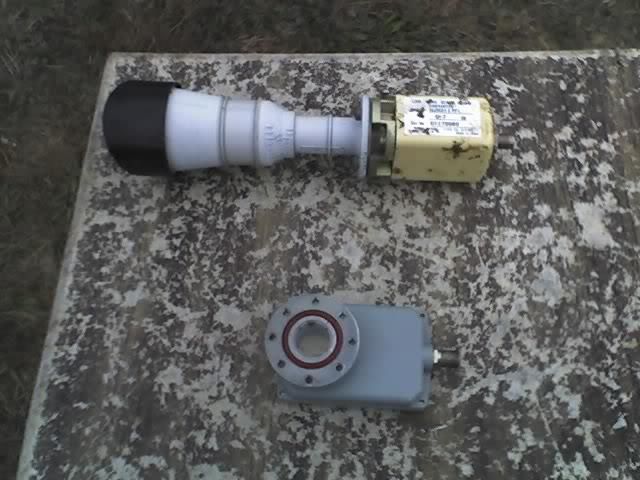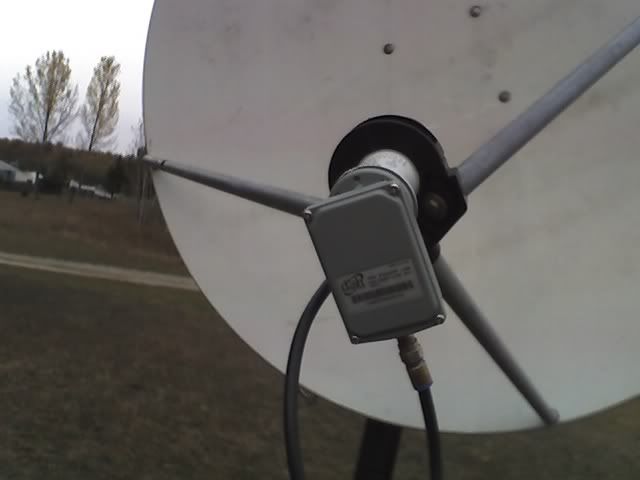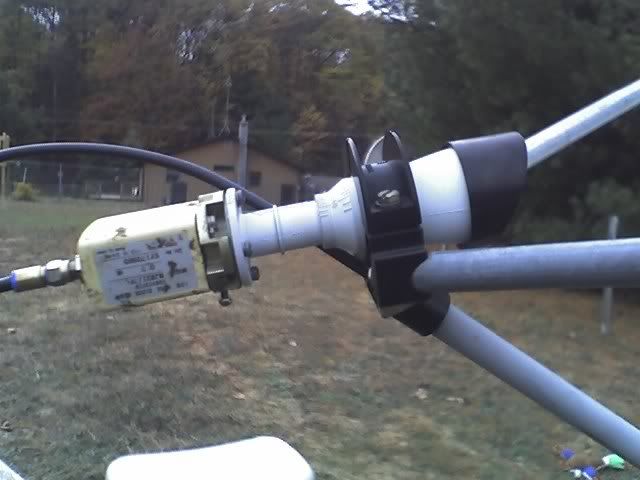I had a new Geo SL1p that I never used because I discovered my 6ft prime focus dish was warped and took it down.
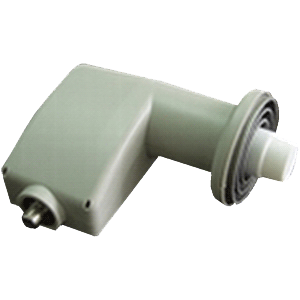
So I got to thinking how it would perform on a offset dish. I pulled the nose cover off, and sawed off the throat and filed it even with the scalar rings. Using a feed horn from a Channel Master 1.2m dish with a C-120 flange as a guide, I marked, drilled, and tapped four holes in the scalar ring. (you could substitute nut and bolt if you don't have a way to tap threads) Then applied a little RTV silicone seal to keep the weather out, and bolted the C-120 flange flush against the scalar ring with the 18mm throats lined up. I decided to do a comparison of the GeoSatPro SL1p against a Invacom SNF-031 and a Prime Star "pop can" NJR-2112F lnb's, all mounted to identical Channel Master feeds.
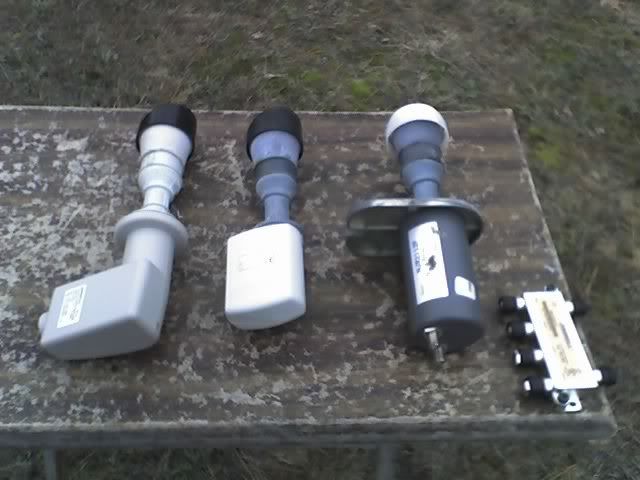
First up was the existing Invacom mounted on my 1.2m Channel Master dish.
I cleaned out all the TP's on three sats and did a fresh scan.
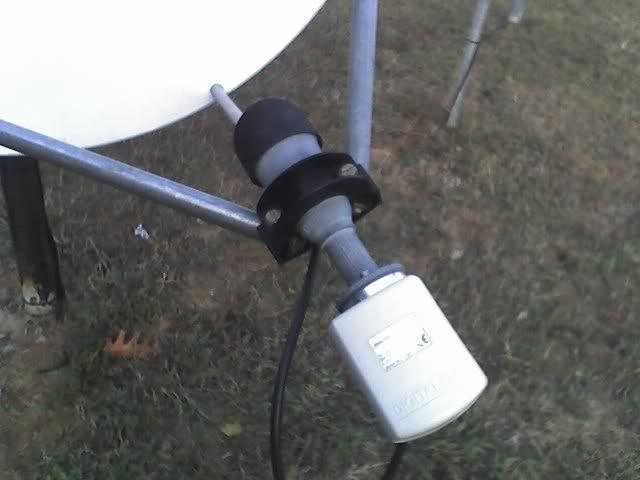
Next was the custom GeoSatPro SL1p.
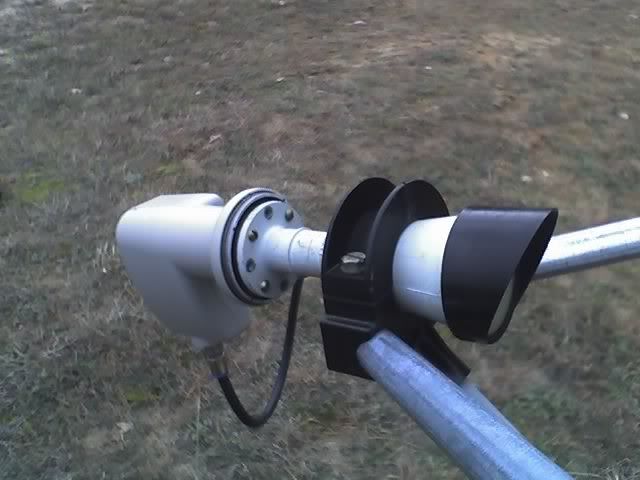
And then the original Prime Star lnb.

Sat TP Invacom Q GeoSat Q Prime star Q
72w 11968 H 1666 72 71 71
72w 12148 V 2573 71 71 71
72w 11844 V 29657 76 76 75
89w 11989 V 4999 71 71 71
89w 11959 V 19530 71 75 76
89w 12173 H 11139 60 44 53
125w 12184 V 29997 76 76 76
125w 12039 H 3725 71 71 71
125w 12167 H 4443 71 71 71
average 71.0 69.6 70.6
Conclusion:
If you throw out the one low level TP from 89w these lnb's test almost identical!
Since the results are in close agreement even though using different priced and age lnb's it might say that the identical feed horns that match the dish is the key reason.
Anytime I've tested after market lnb's with their own feeds the results varied much more.
Good reason to use the original feed for your dish if available.
The GeoSatPro SL1p is a high performing lnb, and Sat AV sells them for $10. A small modification and you can have it bolted up to your original feed!
Satellite AV, LLC - Satellite Broadcaster Support and Equipment Distribution

So I got to thinking how it would perform on a offset dish. I pulled the nose cover off, and sawed off the throat and filed it even with the scalar rings. Using a feed horn from a Channel Master 1.2m dish with a C-120 flange as a guide, I marked, drilled, and tapped four holes in the scalar ring. (you could substitute nut and bolt if you don't have a way to tap threads) Then applied a little RTV silicone seal to keep the weather out, and bolted the C-120 flange flush against the scalar ring with the 18mm throats lined up. I decided to do a comparison of the GeoSatPro SL1p against a Invacom SNF-031 and a Prime Star "pop can" NJR-2112F lnb's, all mounted to identical Channel Master feeds.

First up was the existing Invacom mounted on my 1.2m Channel Master dish.
I cleaned out all the TP's on three sats and did a fresh scan.

Next was the custom GeoSatPro SL1p.

And then the original Prime Star lnb.

Sat TP Invacom Q GeoSat Q Prime star Q
72w 11968 H 1666 72 71 71
72w 12148 V 2573 71 71 71
72w 11844 V 29657 76 76 75
89w 11989 V 4999 71 71 71
89w 11959 V 19530 71 75 76
89w 12173 H 11139 60 44 53
125w 12184 V 29997 76 76 76
125w 12039 H 3725 71 71 71
125w 12167 H 4443 71 71 71
average 71.0 69.6 70.6
Conclusion:
If you throw out the one low level TP from 89w these lnb's test almost identical!
Since the results are in close agreement even though using different priced and age lnb's it might say that the identical feed horns that match the dish is the key reason.
Anytime I've tested after market lnb's with their own feeds the results varied much more.
Good reason to use the original feed for your dish if available.
The GeoSatPro SL1p is a high performing lnb, and Sat AV sells them for $10. A small modification and you can have it bolted up to your original feed!
Satellite AV, LLC - Satellite Broadcaster Support and Equipment Distribution
Last edited:



